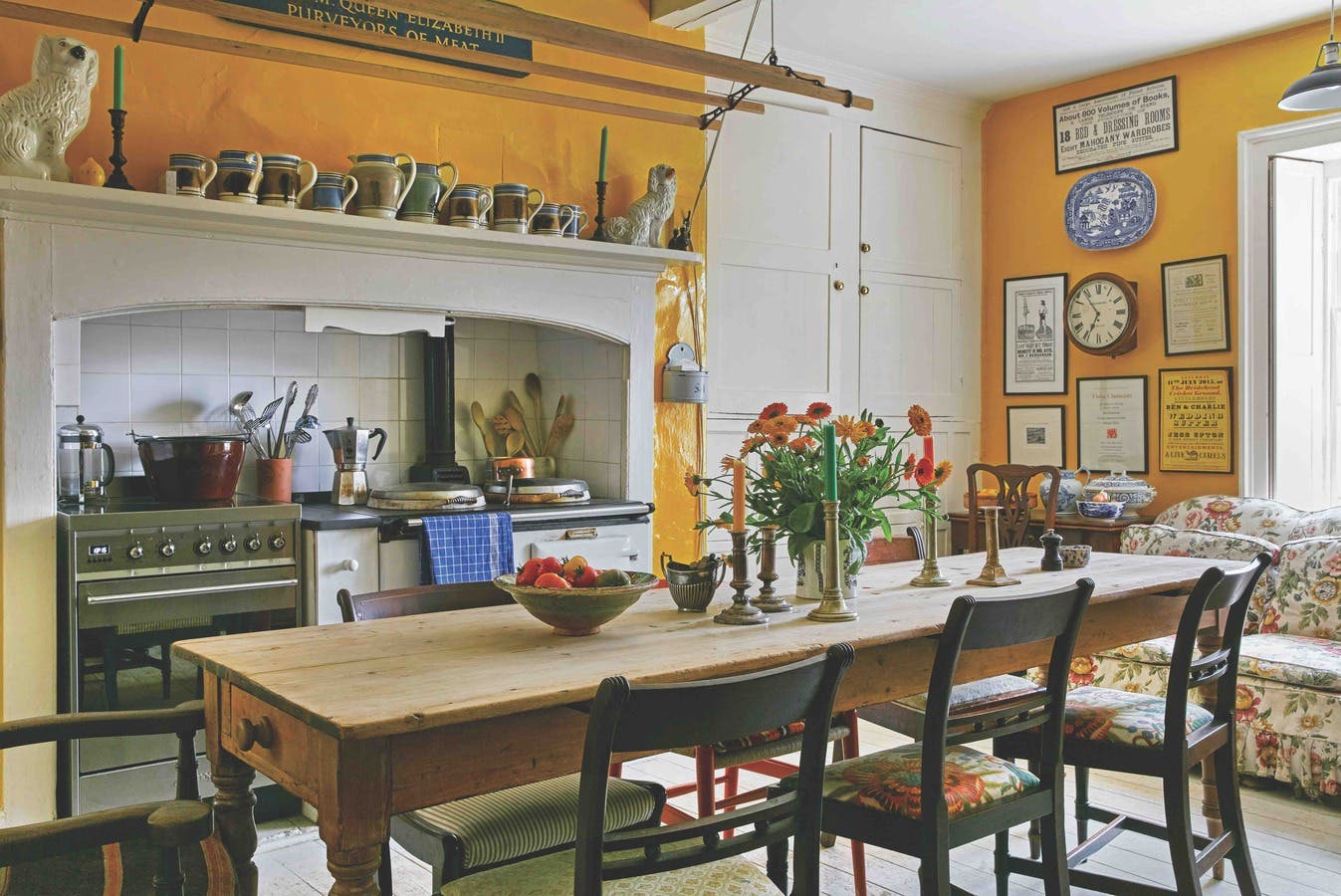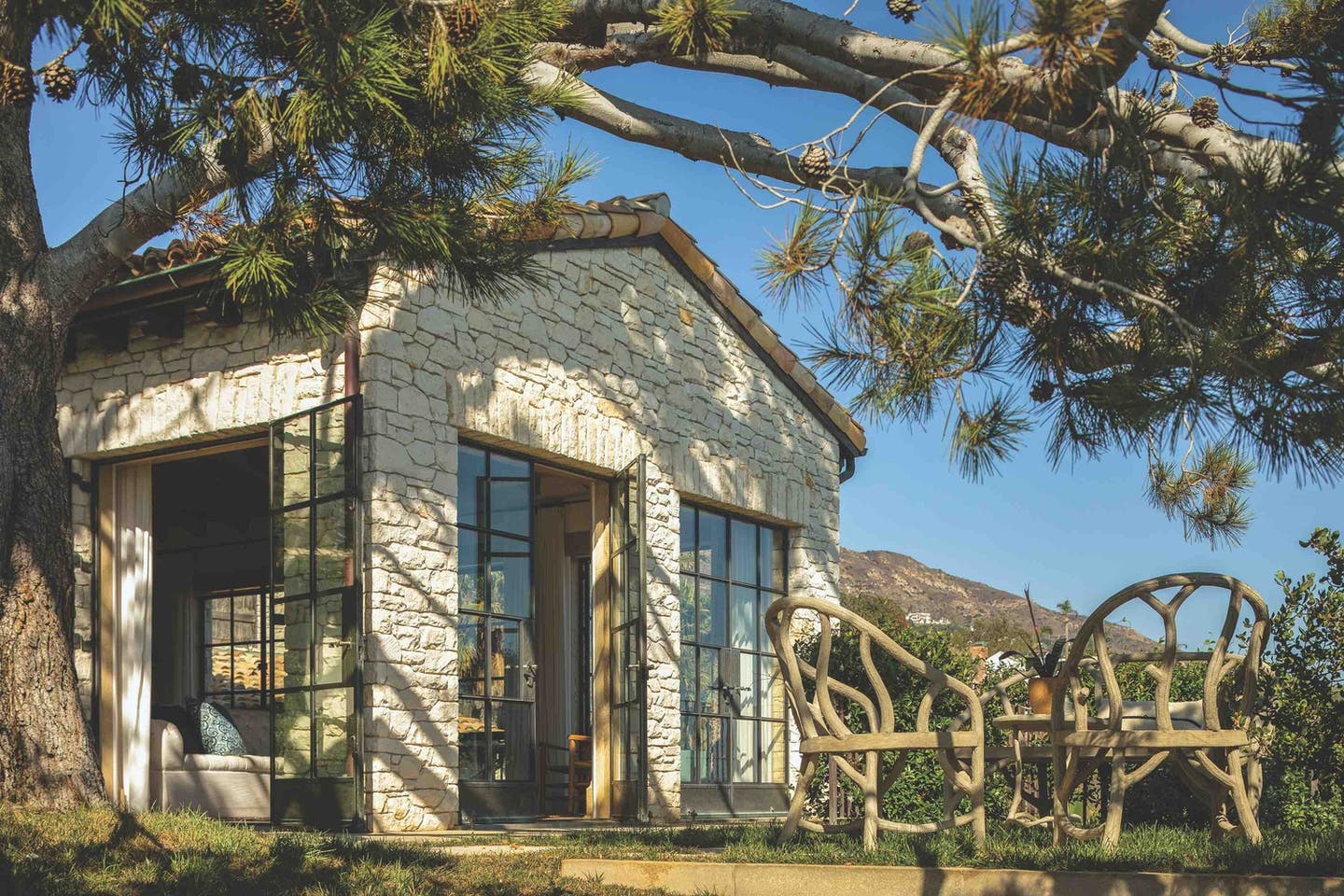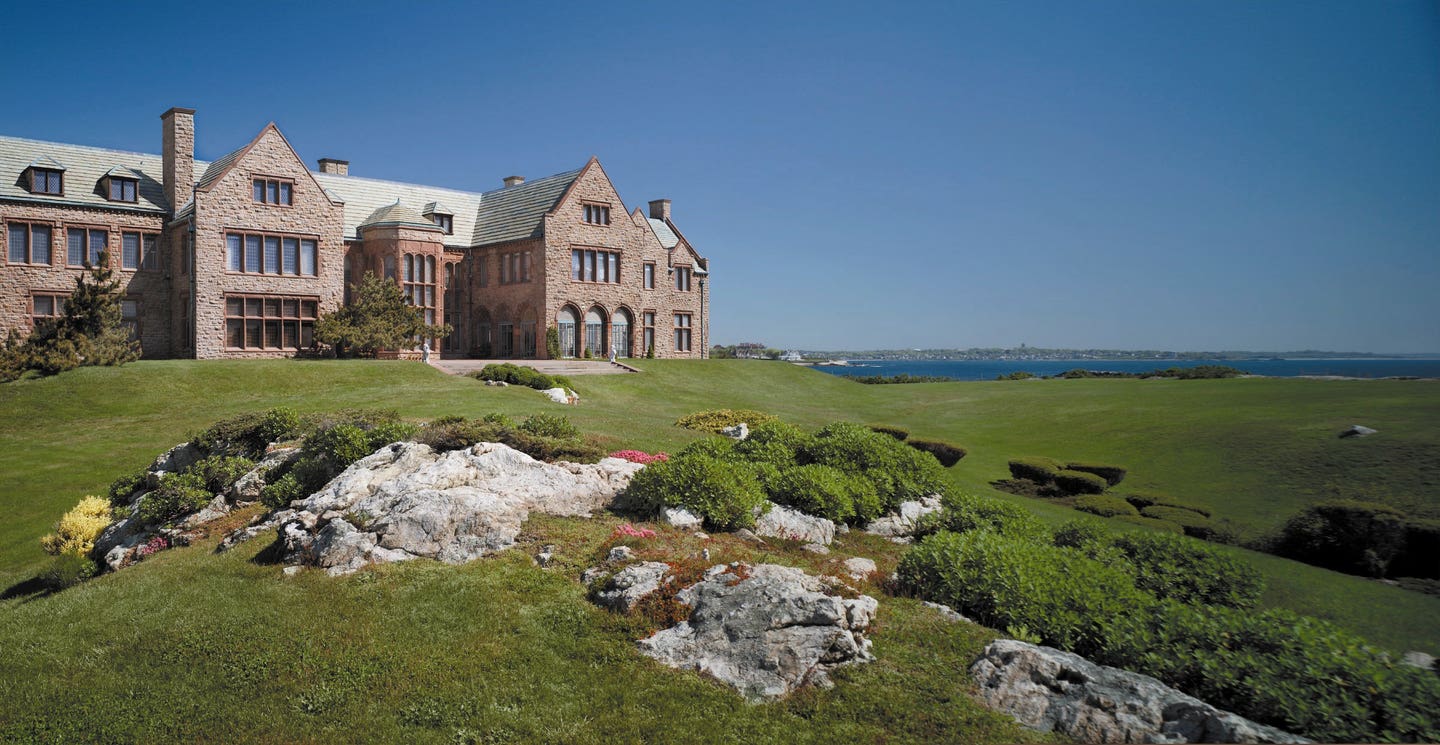
Restoration & Renovation
A Monumental Project
Rough Point lives up to its name with winds howling and waves crashing on this southern end of Newport, Rhode Island. Nature in all of its force and beauty defines this site, upon which a famous family and legendary designers created one of the monumental houses of the Gilded Age. It is a story of the creative integration of architecture and landscape, sometimes working in unison, at other times at odds with one another. The result, in either case, is high drama. The Newport Restoration Foundation, the non-profit organization that owns the house and operates it as a museum open to the public, is taking on the elements of wind and water in its present work on the roof of this landmark in order to protect and preserve the structure, its interiors, and collections. What began as a modest investigation of water issues, according to Alyssa Lozupone, director of preservation for the Newport Restoration Foundation, grew into a major stewardship undertaking encompassing the slate roof and the extensive stonework of chimneys and architectural trim.
Designed and built by the Boston-based firm of Peabody and Stearns between 1887 and 1891 for Frederick William Vanderbilt, one of the heirs to the New York Central Railroad fortune, the house is distinctive for its monumental scale and spartan quality; no ornament adorns the facades, no sculpture tops its roofline. This building is muscular, of rough-hewn granite marked by brownstone trim. Frederick Law Olmsted, renowned for his work at Central Park in New York and both private and public commissions nationwide, advocated for a landscape plan of open meadowlands tended by sheep. The Vanderbilts were inclined toward more formal gardens. This may have been a private project, but it incited great public interest. Olmsted’s ideas were taken up by the noted architecture and landscape critic of the day, Marianna Griswold van Rensselaer, who in her writings encouraged the Vanderbilts to embrace the natural. In the end, no meadowlands or sheep were adopted, but neither was a formal plan. Instead, rolling lawns marked by evergreens defined the landscape. The final result: Stone is not only a central feature of the house, it also dominates the site as rocky outcroppings punctuate the lawns rolling down to the cliffs and an inlet at the center of the shoreline roars repeatedly with the movement of crashing waves.
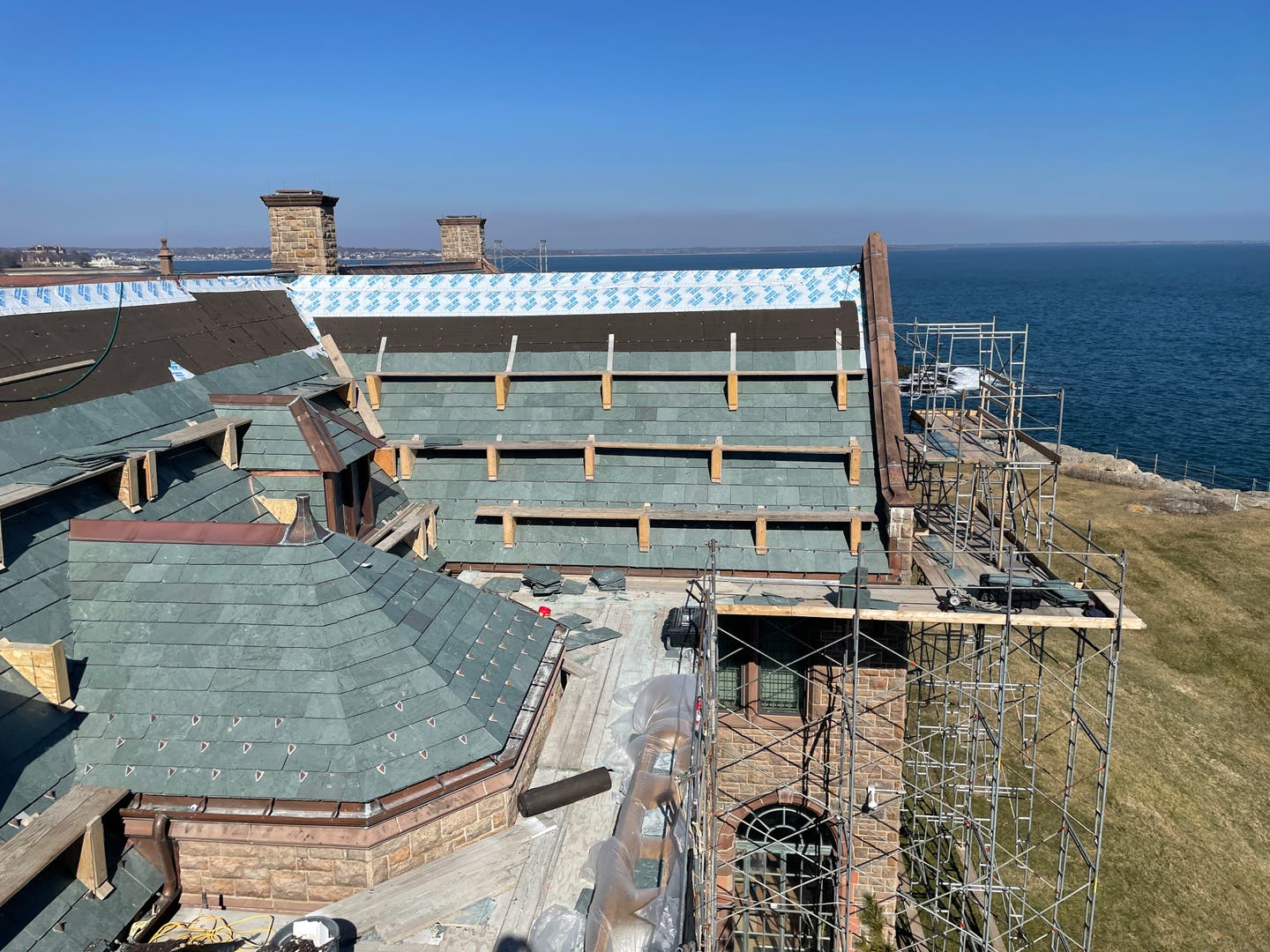
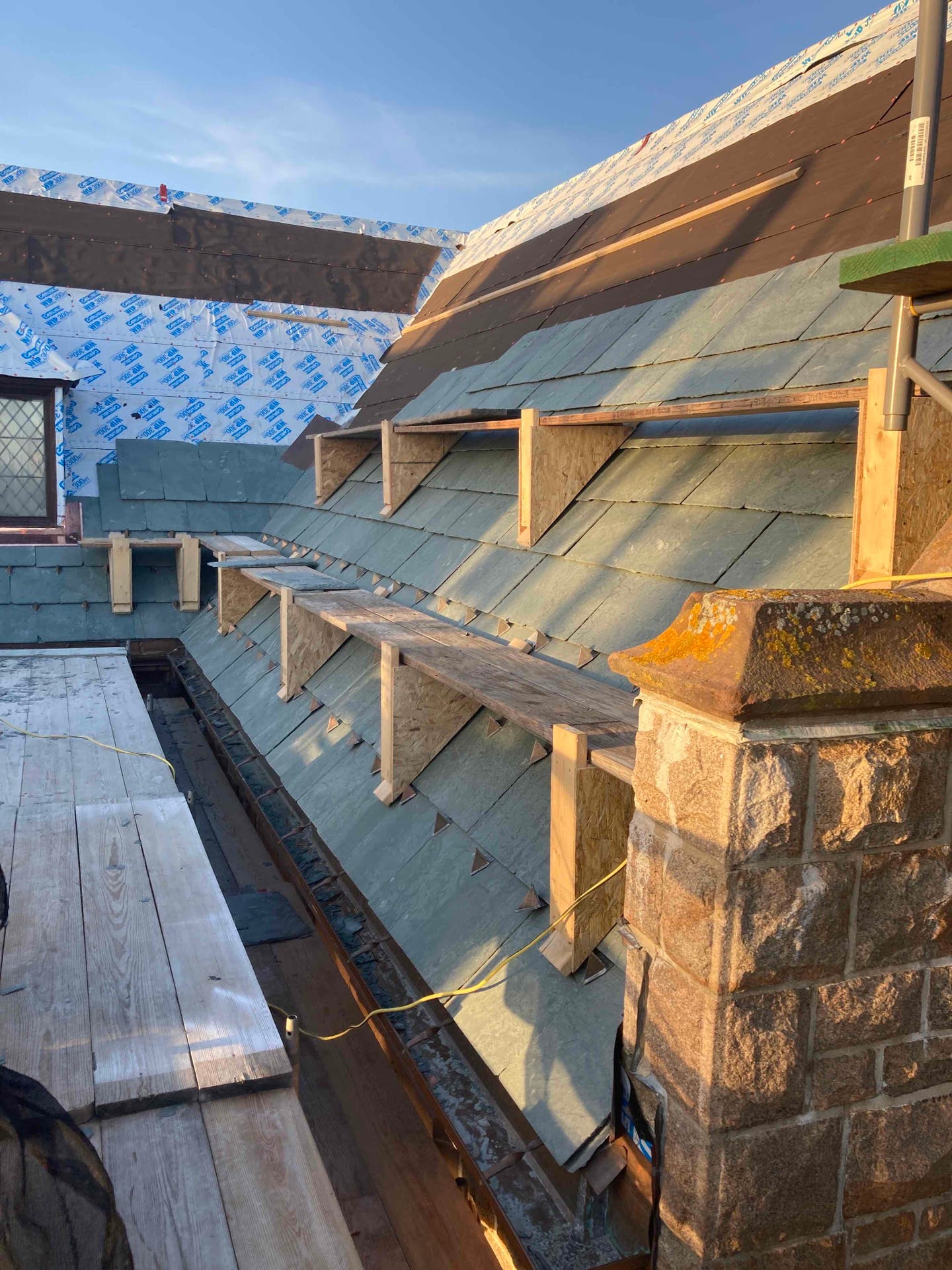
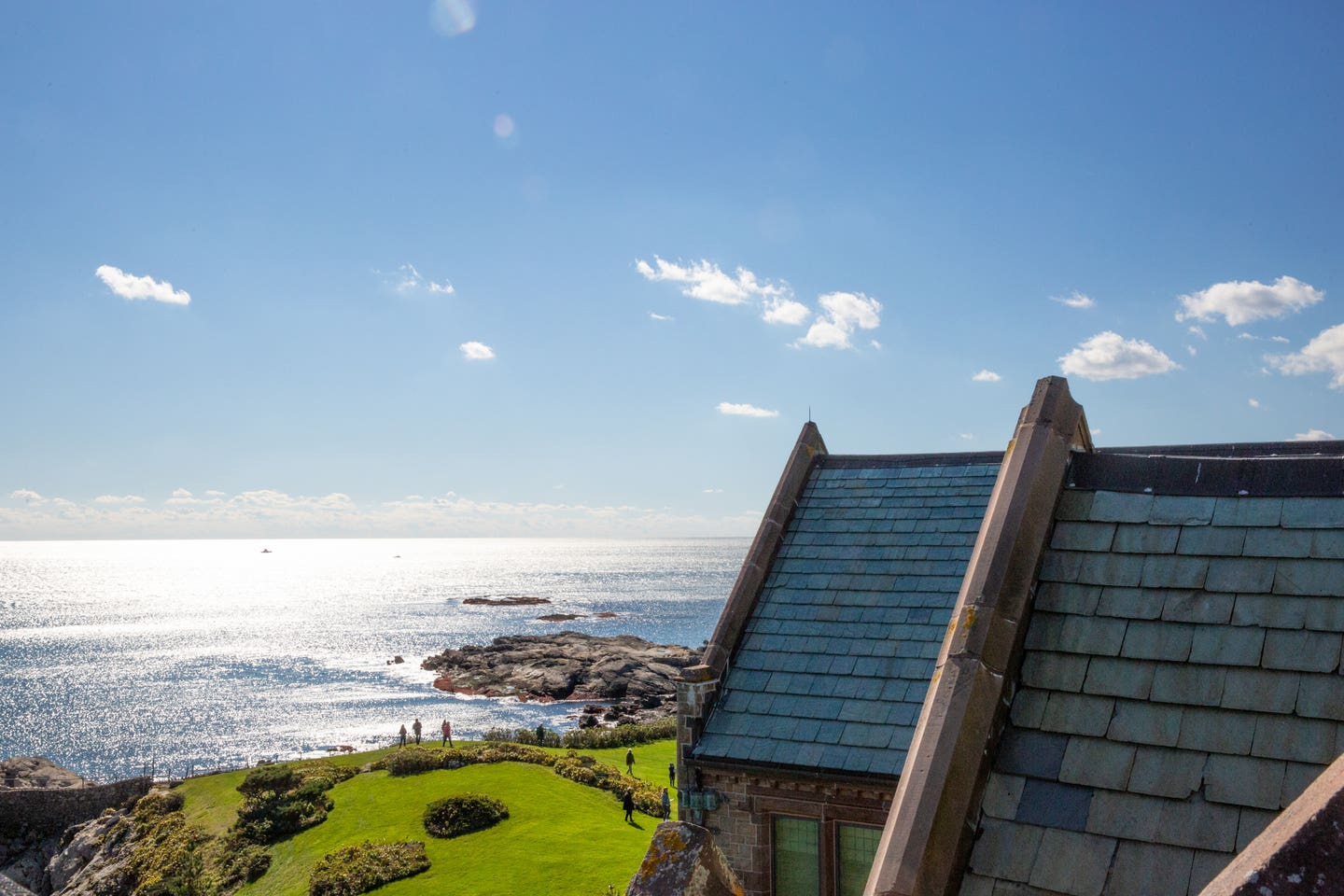
The elements wind, water, and stone dictated the rehabilitation of the roof project, which commenced in 2021 and continued through the winter of 2022. One of the challenges, according to Mark Morrow of Consigli Construction, in business since 1905, was the micro-environment created by cloaking the staging in material to retain enough heat to work on the masonry. With high winds, the material acted “like a sailboat on top of a building,” according to Morrow. Nealia Morrison of DBVW Architects saw the level of planning as critical to the process, knowing that once one unveils the layers of a historic building, one can be faced with many unknown scenarios. One such example was revealed in the westernmost chimney, which had disintegrated at a higher rate than others due to the directions of the winds. Materials also posed challenges. The brownstone used to cap the building’s trims on the roofline and chimneys is no longer quarried in the United States so any replacement stones had to be sourced through architectural salvage. Scale was another issue, specifically with the size of the original slate for the roof. Camara Slate of Vermont custom cut the new slate to the appropriate size for replacement. Metalwork also required the same level of attention to detail. Crocker Architectural Sheeting produced molds for downspouts and provided flashing for the chimneys. Subtle adaptations to these features address the need for future storm management, such as the addition of four new downspouts with increased diameters from the original three to the present four inches, this one-inch change making a critical difference to effective water runoff while not compromising the visual appearance of the historic building. Modified flashing also mitigates the rain, which, on the exposed coastline of Rough Point, often assaults the house in horizontal fashion.
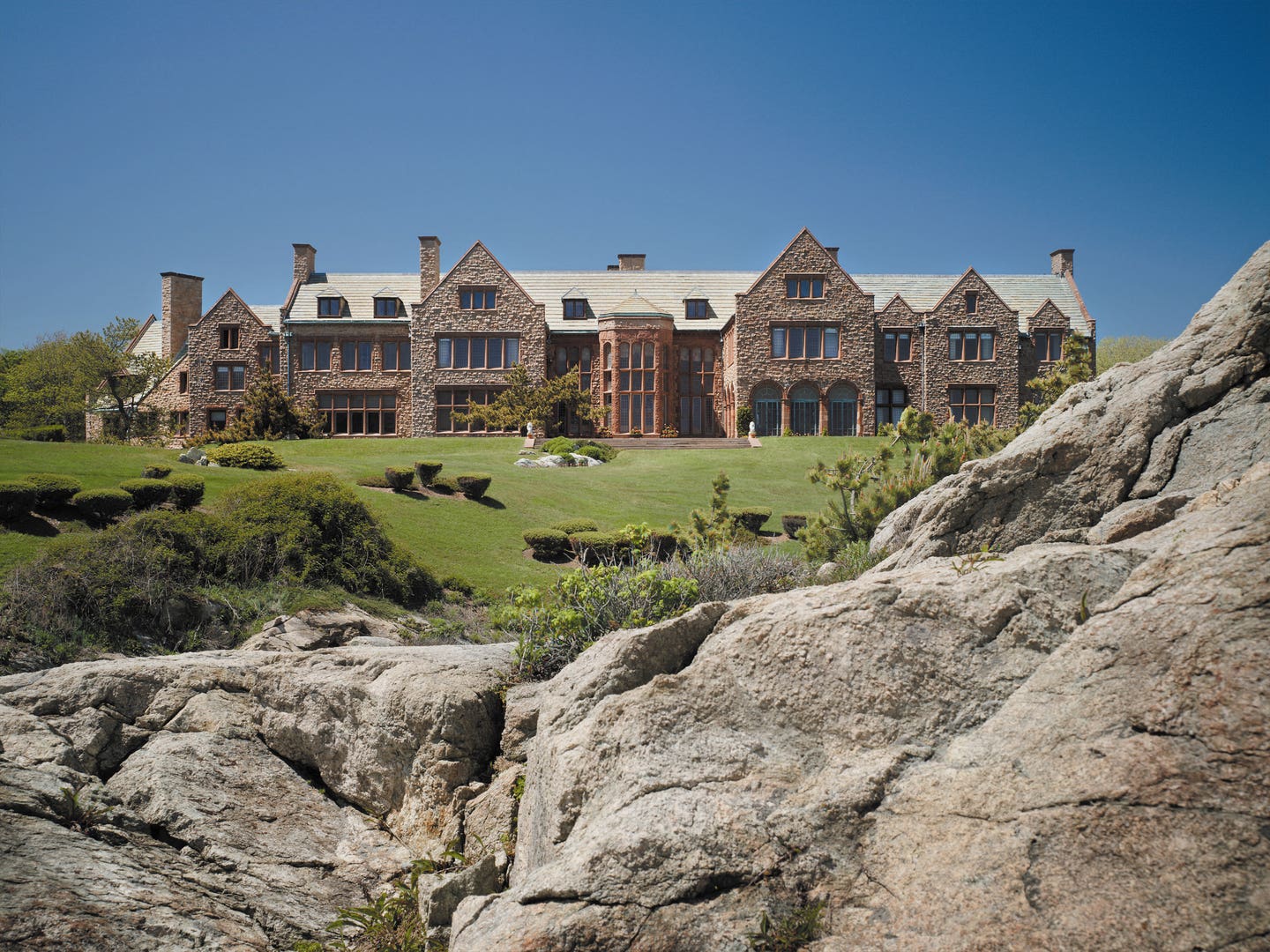

Detailed planning, a respect for materials, craftsmanship, and the preservation of historic character underpinned this project, while making carefully considered adjustments to ensure that the roof continues to shelter, preserve, and protect the house at Rough Point. The winds and waves on this extraordinary site will continue unabated, the stone house will be there to greet them still.
John Tschirch is an architectural historian, writer and teacher specializing in the architectural and social evolution of historic houses and landscapes.



